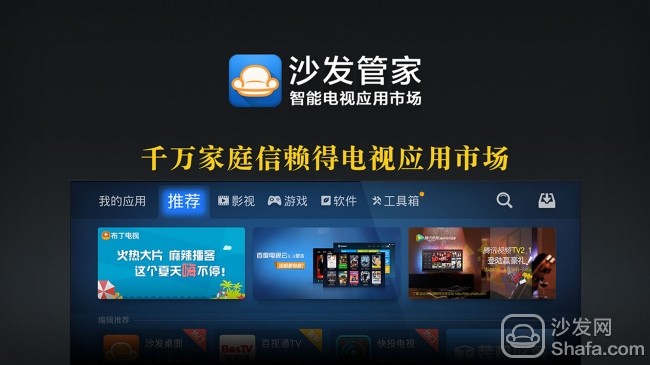
Nowadays, TV is not necessarily used for watching TV. There are more and more people watching TV through computers, mobile phones and PAD. If the terminals that can watch TV are called generalized televisions, then people do not watch TV at the same time. To shorten it is to watch television for a longer time. The "2014 China Smart Screen Industry Media Data Report (TV)" shows that as of the end of March 2014, the penetration rate of smart TVs has reached 56%. According to research data, during the 2014 World Cup in Brazil, 48% of customers worldwide used mobile phones to watch and watch World Cup events and exciting content, second only to watch customers on TV, ranking second (other methods include PCs, PADs, etc.) ). According to the latest statistics, as of September 2014, shipments of OTT set-top boxes nationwide exceeded 45 million. It can be seen that the intelligentization of television terminals changes the way people enter home entertainment. In contrast, people watching television through traditional television sets, especially young people, are becoming less and less, and some even do not even buy TV. Since 2013, Internet TV has rapidly emerged with the eruption of the network set-top box, and many people have returned to the living room television. Running live TV aggregation software on a network set-top box, you can also see what you see on cable TV for free. As a result, cable TV users began to lose.
In the second half of 2014, SARFT began to rectify Internet TV according to Document 181. The original rich network TV content disappeared. However, various aggregation softwares can still be used. The development of these aggregation softwares is not high in terms of barriers to entry. However, due to the ability to aggregate a variety of Internet TV content, including aggregation of live Internet TVs, sales volume in the Internet STB market is gradually picking up. Although live TV was somewhat affected by the network bandwidth, Caton’s attention to live content was reduced and became a dispensable option in a rich Internet TV content environment. When users adapt to this situation, Internet TV has been renewed and sought after. The increasing sales of online boxes have also attracted the attention of Internet tycoons who wanted to occupy TV screens. They are preparing to put a pot of oil on the flames of Internet TV. At the 2014 Asia OTT Summit, it was learned that Internet giants have signed terminal subsidy agreements with more than 90% of box manufacturers in Shenzhen, and each box has a subsidy of RMB 20-50 depending on the level of configuration, provided that its operating system is used to achieve TV screen entrance control. However, this type of Internet TV that does not integrate radio and television broadcasts will inevitably marginalize the broadcasting of DVB broadcasts, which is detrimental to the integration of television media.
For the time being, TV media is divided into traditional television stations and corresponding broadcast networks, as well as new television media based on video websites and the Internet. The traditional TV media is a transmission network based on DVB broadcasting technology. Its technical standards are closed and inconsistent, and the terminals connecting this closed network are mainly set-top boxes. TV new media is based on an open Internet. All terminals with display screens that can connect to the Internet can be collectively referred to as Internet TV terminals. Because the terminal is connected to the user, the number of users connected to the closed network and the terminal is naturally less than that of the open network and the terminal. Open networks and terminals can use the power of marketization to rapidly occupy TV users. This is what the Internet giants of market development value. Because closed DVB broadcasting terminals are incompatible with Internet TV terminals, it is clear that the rapid development of Internet TV terminals will mean the accelerated decline of DVB broadcasting and television terminals, and the corresponding traditional TV media will gradually be marginalized.
On August 18th, the Fourth Meeting of the Central Deepening Reform Leading Group reviewed and adopted the Guiding Opinions on Promoting the Convergence and Development of Traditional Media and New Media. According to the guidance and the above analysis, the convergence of television media must begin with the integration of terminals. Relevant government departments must issue supporting policies to encourage the development of integrated TV terminals so that the integration of television media can be smoothly implemented.
Recommended installation sofa butler Download: http://app.shafa.com/
